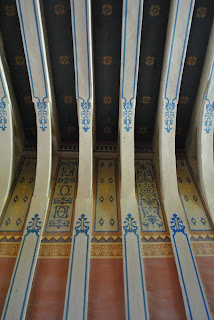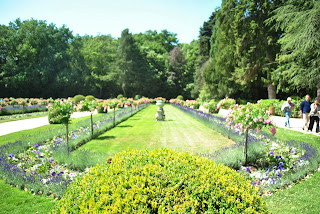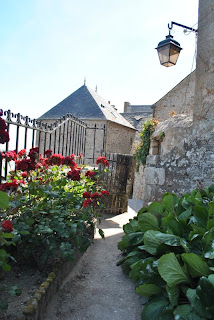'Mid pleasures and palaces though we may roam
Be it ever so humble, there's no place like home.
But before you get all weepy on me, let me tell you about the Loire. It is beautiful and is full of charming riverside towns, vineyards, and, of course, châteaux – over 300 of them! The two that my dad and I visited, Chambord and Chenonceau, are two of the most famous and recognizable châteaux and they were both incredible, although very different in terms of architecture and history.
Oh, but before I show you the châteaux, I thought I'd throw in a bonus pic of Tours, the town we stayed in the night before (after we left Mont St. Michel). Tours is the largest city in the Loire Valley and is known partly for its spectacular cathedral:
Alllright, now that that's out of the way, we can commence with the châteaux. So we left Tours (indicated by a large green dot on the map below) in the morning and headed to Chenonceau, which is situated on the Cher River, a tributary of the Loire.
The Château de Chenonceau is one of the prettiest châteaux in the Loire Valley and also one of the oldest. It dates back to the 11th century and was famously the home of King Henri II's mistress Diane de Poitiers until the king's death, when his widow, Catherine de Medici, forced Diane to exchange it for the Château de Chaumont and then moved her royal ass in and made Chambord one of her favorite residences. Don't feel too bad for ol' Diane though. Chaumont is still pretty baller. http://www.37-online.net/chateaux/photos/photos_chaumont/chaumont_page.jpg
The famous "gallery" of the château actually crosses the Cher River. It was added on to the château by Catherine de Medici in 1576.
This part of the château also played a role in both World Wars. During the first, Gaston Menier, the then-owner of the château paid for a hospital to be set up here in the gallery, as is evidenced by the sign in the above photo, which reads "Here 2,254 wounded were cared for during the war." During the Second World War, Chenonceau again aided the Allied cause by serving as a passage between occupied France and the Free Zone. Because the Cher River, on which the château sits, served as the demarcation line between these two areas, the door of the château was in occupied France, whereas the exit from the South door at the end of the gallery was not. This made it possible for the allies to pass hundreds of people through the château into the Free Zone.
View of the Cher River
Catherine de Medici's bedroom.
Diane de Poitiers' garden again.
The aforementioned gallery that crosses the Cher, view from the garden.
Couldn't decide which I liked better, so I just put them both up.
Catherine de Medici's Garden
So after we left Chenonceau, we made our way up the Loire to Blois, where we stopped for lunch, and then it was on to the Château de Chambord (I included the map for those of you too lazy to scroll back up...which I assume is most of you. No judgement.)
Annnnnyway, now that we've all oriented ourselves, I can go ahead and tell you about Chambord. It is the biggest château of the Loire with 440 rooms, 365 fireplaces, and 84 staircases. This massive building was, like Versailles, originally built as a "hunting lodge" (I know, who needs 440 rooms to go hunting?) for François I and then passed through a myriad of owners before eventually being bought by the French government in 1930.
So that's it. Like, that's the end. No more blog posts. Sad times for all of us.
But seriously, I had a blast writing this blog and creating these posts and I really hope you guys enjoyed reading it as much as I enjoyed writing it. I want to thank all of you so much for your comments and compliments about the blog -- they made me so happy and gave me so much encouragement, especially since I know next-to-nothing about either blogging or photography. I hope I get to do something like this again, as sharing my adventures with you all has been so much fun for me. No one else appreciates mes bêtises like you guys.







































































